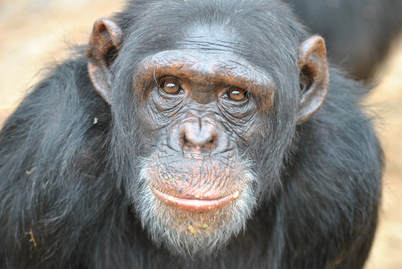|
Some people claim science is a killjoy. Why measure and analyze and classify everything? Why try to figure out how everything works? Why can’t scientists let nature be and enjoy it without dissecting it apart and figuring out what makes it tick? Are scientists spending too much time locked away in labs to relate to the world like normal people? And even those that do get out and interact with nature, shouldn’t they stop viewing everything through the prism of ecosystems and niches and predator-prey relationships and whatnot? I have to strongly disagree with this notion. From my vantage point, science vastly enriches our enjoyment of the world and greatly magnifies the sense of awe that we can feel.  Consider a mighty peak like Mount Everest. Imagine you are at the foot of the mountain and you tilt your head back so much that your neck hurts. You can see the great rocky summit reared against the arc of the sky gleaming in the sun sporting a plume of wind-swept snow. The highest point in the planet is so beautiful and majestic. Now allow me to quote what nature writer John McPhee wrote in his book Annals of the Former World: “When the climbers in 1953 planted their flags on the highest mountain, they set them in snow over the skeletons of creatures that had lived in the warm clear ocean that India, moving north, blanked out. Possibly as much as twenty thousand feet below the seafloor, the skeletal remains had formed into rock. This one fact is a treatise in itself on the movements of the surface of the earth. If by some fiat I had to restrict all this writing to one sentence, this is the one I would choose: The summit of Mt. Everest is marine limestone.” That lofty pinnacle up there was once part of a sea bottom! This knowledge expands our capacity for enjoying the beauty of Everest and its significance. And it’s not just Mount Everest. Every mountain, every hill, every rock outcrop has a fascinating geologic story behind it. The landscapes all around us are ephemeral instants of geologic time where mountains reach for the sky and are eroded to the ground for eternity.  Suppose you go to the zoo with your family. You stare in amazement at the elephants, giraffes, rhinoceroses, hippopotamuses, pandas, lions, tigers, antelopes, apes, and other animals. Such diversity of sizes and body shapes, such colors, such beauty. All these living things form part of the tapestry of life. How many stories and paintings have they inspired? But as it turns out, we are part of the weave! Scientists have discovered that all these animals, including us, arose on this planet through a process of evolution which means we all share common ancestors. So when you peer into the eyes of a chimpanzee, you are looking back to the dawn of our species because they are one of our closest relatives.  Now imagine it’s nighttime and you are in the country far away from the lights of the city. You stare at the sky and see the myriad of stars, the diffuse cloud of our galaxy the Milky Way, and perhaps even a planet or two. Those marvelous worlds and suns so far removed from us. How many songs, and poems, and stories have they inspired? Now allow me to quote what the late astronomer Carl Sagan said in his famous program Cosmos: “The nitrogen in our DNA, the calcium in our teeth, the iron in our blood, the carbon in our apple pies were made in the interiors of collapsing stars. We are made of star stuff.” Yes, the components of your body and in fact of all life on Earth were created “up there” billions of years ago by some of the most titanic explosions that the universe has ever produced. Doesn’t that blow your mind away?  Finally, imagine being able to create reality by the mere act of observing it. Imagine an entity that can be a wave and a particle at the same time, that can be in two different places simultaneously, or that appears to go back in time. Imagine split realities, multiple universes, spooky actions at a distance, and a cat that is both dead and alive. These are some of the bizarre or counterintuitive phenomena and ideas generated by quantum mechanics. Quantum Mechanics is the highly successful theory ushered into existence by individuals that have become the stuff of legend such as Bohr, Planck, Einstein, Heisenberg, and Schrödinger, and which has made possible computers, smartphones, the internet, GPS, and MRI. Many scientific theories have challenged specific beliefs that humans beings harbored regarding their surroundings, but quantum mechanics has called into question our most basic notions of matter, space, and time, generating amazing realms where fantasy seemingly merges with realty, and where we can wander and wonder. These discoveries, and many others that have opened our senses and imagination to the hidden secrets of our planet and the universe, were only possible thanks to generations of researchers who spent years of their lives in offices, labs, or in the field thinking, measuring, analyzing, classifying, and performing experiments. These scientists were awed by their discoveries, and they have generated inspiration for poets, painters, writers, photographers, musicians, filmmakers, sculptors, and many others. Are you ready to be inspired? Learn about science! Schrodinger's Cat by Jie Qi is used here under an Attribution 2.0 Generic (CC BY 2.0) license, Everest photo credit: Rupert Taylor-Price / Foter.com / CC BY, Galaxy (CC0), Chimpanzee photo by Afrika Force is used under an Attribution 2.0 Generic (CC BY 2.0) license.
2 Comments
Rolando Garcia
3/22/2022 10:45:17 am
Thanks Haseeb!
Reply
Your comment will be posted after it is approved.
Leave a Reply. |
Details
Categories
All
Archives
June 2024
|
 RSS Feed
RSS Feed